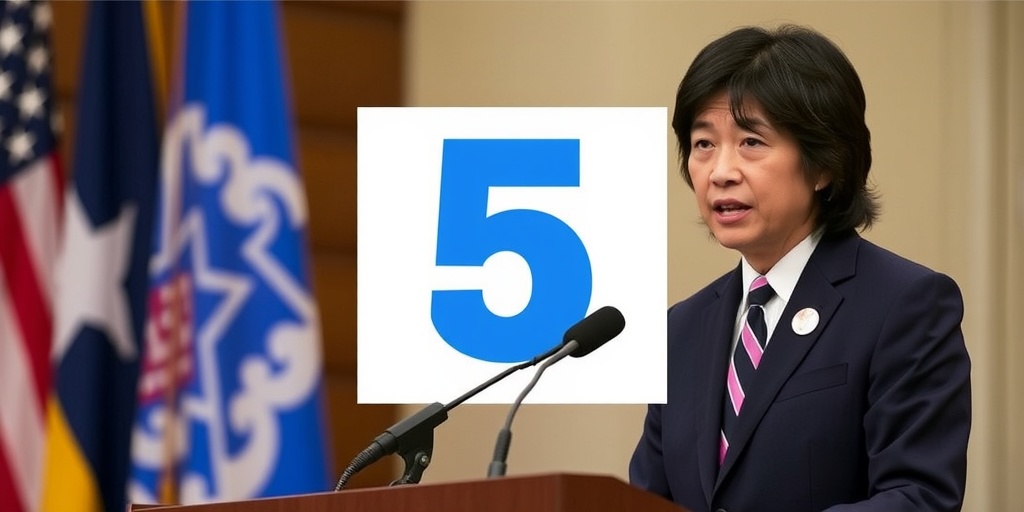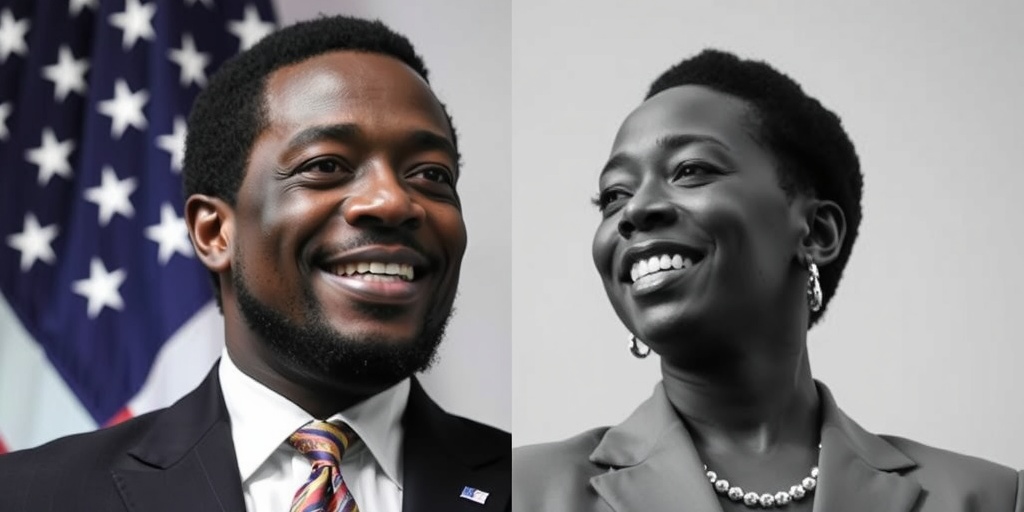Now Reading: 5 Key Highlights from Hochul’s State of the State Address
-
01
5 Key Highlights from Hochul’s State of the State Address
5 Key Highlights from Hochul’s State of the State Address

In her fourth State of the State address, Governor Kathy Hochul of New York set the stage for her re-election campaign, aiming to reconnect with disillusioned Democrats who had previously distanced themselves from the party. As she prepares for a difficult battle for a second term, her speech, lasting about 54 minutes, sought to align her policy initiatives with the evolving political landscape in the state. Hochul acknowledged the concerns of voters frustrated by rising living costs and immigration issues, factors that contributed to Donald Trump’s surprisingly strong performance in New York during the last election.
During her address, Hochul presented a variety of proposals intended to alleviate financial pressures on renters and parents of young children. Among these measures were plans targeting the high cost of housing and child care. She introduced a statewide tax cut for residents earning less than $323,000 and announced rebate checks stemming from surplus tax revenues. Stressing her commitment to these initiatives, Hochul likened her determination to that of the New York Liberty basketball team, winners of the 2024 W.N.B.A. title. Notably absent from her remarks was a discussion of Democrats’ legislative achievements or her own record since taking office in 2021.
One of the primary focuses of her address was affordability. Hochul revisited her earlier pledge for a $1,000 child tax credit, a proposal that could potentially offer financial relief to nearly 3 million children across the state. She committed $110 million to enhance child care facilities and dedicated herself to pursuing universal child care in New York. “That’s how we make New York more affordable,” she asserted, emphasizing her goal to continually seek out ways to alleviate financial burdens on families. However, critics have raised concerns regarding the feasibility of these initiatives and whether they can be implemented in time to influence voters before the upcoming elections.
Another significant topic addressed by Hochul was public safety, particularly concerning crime and mental health. Echoing sentiments often expressed by city officials, she stated, “We cannot allow our subway to be a rolling homeless shelter.” The governor proposed updating the criteria for involuntary hospitalization to assist individuals lacking the mental capacity to care for themselves. This initiative aims to address the mental health crisis that has become increasingly visible in urban areas.
Despite her efforts, some lawmakers and advocates expressed skepticism about the specifics of her proposals, suggesting they lacked clarity for effective implementation. Carl Heastie, the Assembly speaker, voiced support for addressing mental health issues but cautioned that Democrats might resist measures seen as infringing on the rights of homeless individuals. Furthermore, he and others highlighted the challenges posed by insufficient support systems for those in crisis.
Amid increasing concerns about crime and public safety, Hochul announced plans to deploy additional police officers to New York City subway systems during late-night hours for the next six months. Yet, some local officials, such as Assemblywoman Emily Gallagher, criticized the effectiveness of this approach, arguing that mere police presence does not guarantee public safety improvements.
The political implications of Hochul’s address were apparent, especially given the impending 2026 midterm primary. Republican Representative Mike Lawler, who is considering a run against the governor, condemned her policies at a press conference before her speech, asserting that her proposed tax cuts would ultimately do more harm than good. “Taking thousands of dollars out of New Yorkers’ left pocket and then putting $500 in their right pocket is not a tax break. It’s an insult,” Lawler argued, emphasizing ongoing dissatisfaction among voters.
Hochul also unveiled a plan to allocate $400 million to revitalize Albany, her adopted city, addressing issues stemming from a pandemic-related decline in state workers and ongoing crime concerns. Her proposals include significant investments in local infrastructure and public safety enhancements, with $150 million earmarked for transforming the New York State Museum and $200 million allocated to improve public safety and community well-being.
Additionally, the governor intends to expedite plans to reconfigure highways that have historically divided neighborhoods, implementing projects aimed at rectifying decades-long inequalities. In Albany, efforts are underway to modify Interstate 787 to better connect the community to the Hudson River.
Remarkably, Hochul’s address included little mention of the impending challenges expected from President-elect Trump’s second term, such as his plans to enforce mass deportations and other contentious policies. Instead, she emphasized her commitment to lowering costs and fighting for families facing economic hardship. In a conciliatory tone, she acknowledged the struggles encountered by New Yorkers, attributing their distress to various factors, including inflation, soaring rents, stagnant wages, and the demands placed on the state by an influx of migrants.
As the political landscape evolves ahead of the upcoming elections, Hochul’s address appears strategically crafted to address voter concerns while addressing the realities of governing in a complex and shifting environment.
Stay Informed With the Latest & Most Important News
Previous Post
Next Post
-
 01New technology breakthrough has everyone talking right now
01New technology breakthrough has everyone talking right now -
 02Unbelievable life hack everyone needs to try today
02Unbelievable life hack everyone needs to try today -
 03Fascinating discovery found buried deep beneath the ocean
03Fascinating discovery found buried deep beneath the ocean -
 04Man invents genius device that solves everyday problems
04Man invents genius device that solves everyday problems -
 05Shocking discovery that changes what we know forever
05Shocking discovery that changes what we know forever -
 06Internet goes wild over celebrity’s unexpected fashion choice
06Internet goes wild over celebrity’s unexpected fashion choice -
 07Rare animal sighting stuns scientists and wildlife lovers
07Rare animal sighting stuns scientists and wildlife lovers





















